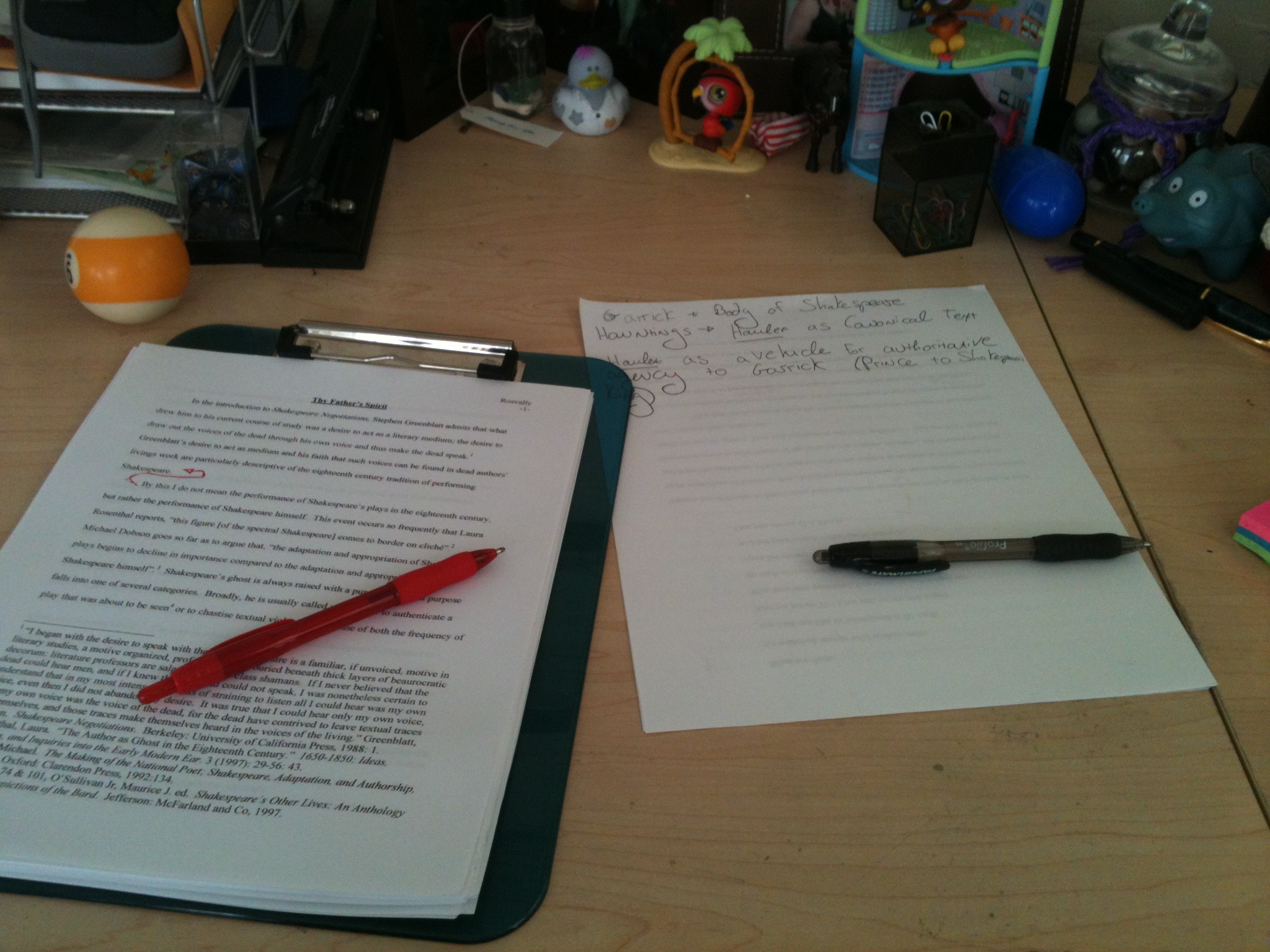I’m a slow writer and I need many drafts to create something that I feel is worthwhile.
This should not come as a surprise to anyone who has been following this blog for some time. I’ve explicated my writing process on several occasions, and over the years while the materials have changed (I RARELY do literal cut and paste jobs anymore), the methods certainly haven’t.
This might come as a surprise to anyone who realizes that I’m a blogger and puts two and two together. Blogging is a sphere which, of necessity, requires you to develop content quickly and efficiently. So how can a blogger be an admittedly “slow writer”?
Now let’s start here: I’m not talking George R.R. Martin slow. In fact, I think that guy ought to be ashamed of himself. My beloved did the math at one point and determined that Martin produces something like 250 viable words a day. WHAT? If I wrote that slowly, they would boot me from my program and make me wear a sign of shame around my neck to tell the world that I was an embarrassment to the ivory tower and writers everywhere. When I say “slow”, I mean more that I need many many drafts to forge and re-forge a piece of academic writing in order to temper it and make it stronger. I’m up to something ridiculous like fifteen drafts of one piece I’m working on right now (don’t worry, I’m about to hit the “send” button on that one, so before you get lecturey about over-drafting just stop and take stock of the fact that I’ve been working on it for a year and a half now because it’s been interspersed with other projects).
Academic writing is completely different from any other style of writing. When I blog, for example, I generally require one hour from inception to publication of a post. This includes

This morning’s drafting session
research. When I write creatively, I produce a preliminary draft of content very quickly and go back over it a few times before I feel like others can lay eyes on it (more like three drafts than ten). I can produce 2,500 words of first draft creative fiction in about an hour. More disposable content, like facebook and twitter updates, are just banged out in about point five seconds.
Each of these styles of writing is important to one’s development as a writer. I believe that writing is an under-appreciated and under-developed aspect of the academic work. While we’re expected to generate writing at pivotal points in our career, there’s very little support (unless you create it yourself) for exercising and bettering your writing. So many academics hold their writing process to close to the chest that it’s often difficult to trouble-shoot your own process. I have taken to asking mentors and peers, at conferences or other socially appropriate forums, what their writing process is like just to get new ideas about things I could do better. I’ve learned a few tricks (some of them more palatable than others; there is no way in any universe that I’ll be waking up at 6AM to fit in three hours of just writing before I go about the rest of my day but I’m glad that it works for some people), and I’ve mostly learned this: everyone’s process is different. Much like a workout regime, some basic rules apply universally: repetition is a must, sustainability is key, and knowing when to push yourself and/or rest will help you be more productive in the long run. Other than that, just do it. Find whatever works for you, and get going. Do it today, do it tomorrow, do it the day after. Keep writing; the only way to fail here is by inaction.
One of the things I’ve learned about myself is that once I get to the drafting stage, I can roll home without much problem. Drafting time is my favorite point in the writing process. This is the point where I get to take my colored pens and hone my work until it’s shiny and better than it was before. There’s something so satisfying about the instant gratification of taking a piece of writing and making it be better. There’s also an immediate visual cue that red-penning a page gives you; “LOOK HOW MUCH I CHANGED! THIS IS HOW MUCH BETTER IT IS NOW!” In a field that functions so basically on intangible items, this kind of tangible and visible change is a welcome breathe of fresh air and something that I, kinesthetic learner that I am, desperately need to feel satisfied.
Also, when I draft, I can take my work for walks. It keeps me focused to have a stack of papers in front of me and no internet to distract. I take my draft, go to a local coffee shop, buy a cuppa, and stay until I’m done. This breaks my work up into logical and manageable chunks and keeps me from mid-day burnout. Sometimes even a little sunshine and fresh air (on my way to/from wherever I’m going for the day, for example) can help to give me a little boost when I need it most.
So keep on keeping on, brave writers! Venture boldly forth and practice, practice, practice.





